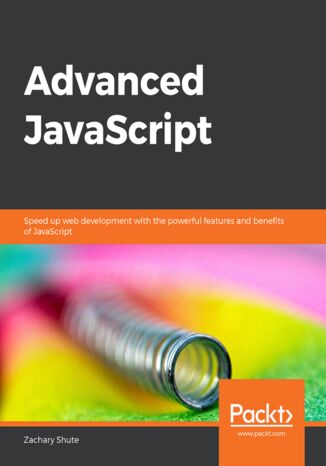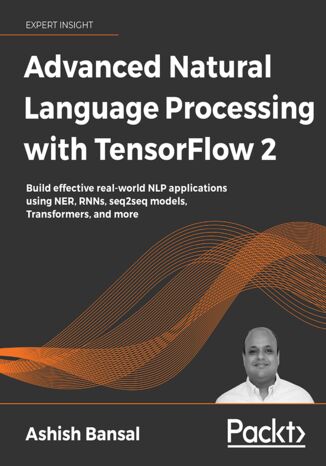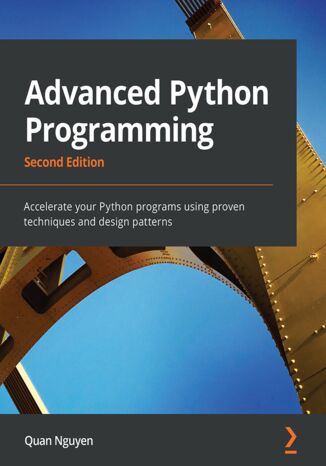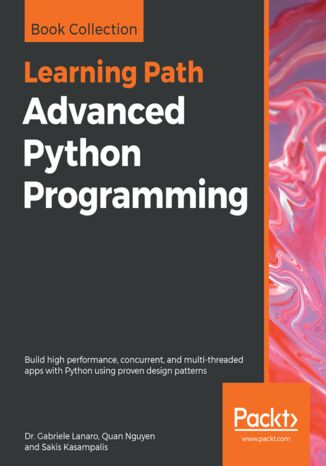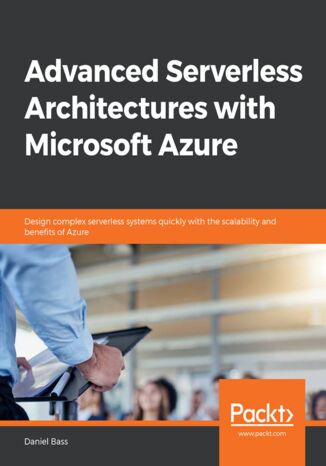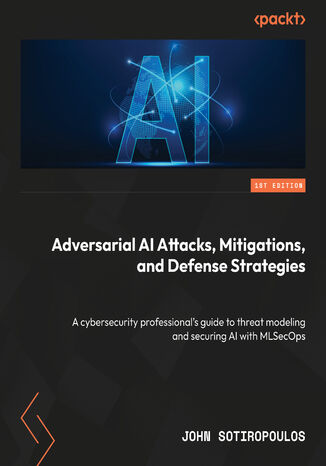Kategorie
-
- Bitcoin
- Bizneswoman
- Coaching
- Controlling
- E-biznes
- Ekonomia
- Finanse
- Giełda i inwestycje
- Kompetencje osobiste
- Komputer w biurze
- Komunikacja i negocjacje
- Mała firma
- Marketing
- Motywacja
- Multimedialne szkolenia
- Nieruchomości
- Perswazja i NLP
- Podatki
- Polityka społeczna
- Poradniki
- Prezentacje
- Przywództwo
- Public Relation
- Raporty, analizy
- Sekret
- Social Media
- Sprzedaż
- Start-up
- Twoja kariera
- Zarządzanie
- Zarządzanie projektami
- Zasoby ludzkie (HR)
-
- Architektura i wnętrza
- BHP
- Biznes i Ekonomia
- Dom i ogród
- E-Biznes
- Ekonomia i finanse
- Ezoteryka
- Finanse
- Finanse osobiste
- Firma
- Fotografia
- Informatyka
- Kadry i płace
- Kobieca
- Komputery, Excel
- Księgowość
- Kultura i literatura
- Naukowe i akademickie
- Ochrona środowiska
- Opiniotwórcze
- Oświata
- Podatki
- Podróże
- Psychologia
- Religia
- Rolnictwo
- Rynek książki i prasy
- Transport i Spedycja
- Zdrowie i uroda
-
- Aplikacje biurowe
- Bazy danych
- Bioinformatyka
- Biznes IT
- CAD/CAM
- Digital Lifestyle
- DTP
- Elektronika
- Fotografia cyfrowa
- Grafika komputerowa
- Gry
- Hacking
- Hardware
- IT w ekonomii
- Pakiety naukowe
- Podręczniki szkolne
- Podstawy komputera
- Programowanie
- Programowanie mobilne
- Serwery internetowe
- Sieci komputerowe
- Start-up
- Systemy operacyjne
- Sztuczna inteligencja
- Technologia dla dzieci
- Webmasterstwo
-
- Antologie
- Ballada
- Biografie i autobiografie
- Dla dorosłych
- Dramat
- Dzienniki, pamiętniki, listy
- Epos, epopeja
- Esej
- Fantastyka i science-fiction
- Felietony
- Fikcja
- Humor, satyra
- Inne
- Klasyczna
- Kryminał
- Literatura faktu
- Literatura piękna
- Mity i legendy
- Nobliści
- Nowele
- Obyczajowa
- Okultyzm i magia
- Opowiadania
- Pamiętniki
- Podróże
- Poemat
- Poezja
- Polityka
- Popularnonaukowa
- Powieść
- Powieść historyczna
- Proza
- Przygodowa
- Publicystyka
- Reportaż
- Romans i literatura obyczajowa
- Sensacja
- Thriller, Horror
- Wywiady i wspomnienia
-
- Archeologia
- Bibliotekoznawstwo
- Filmoznawstwo
- Filologia
- Filologia polska
- Filozofia
- Finanse i bankowość
- Geografia
- Gospodarka
- Handel. Gospodarka światowa
- Historia i archeologia
- Historia sztuki i architektury
- Kulturoznawstwo
- Lingwistyka
- Literaturoznawstwo
- Logistyka
- Matematyka
- Medycyna
- Nauki humanistyczne
- Pedagogika
- Pomoce naukowe
- Popularnonaukowa
- Pozostałe
- Psychologia
- Socjologia
- Teatrologia
- Teologia
- Teorie i nauki ekonomiczne
- Transport i spedycja
- Wychowanie fizyczne
- Zarządzanie i marketing
-
- BHP
- Historia
- Kodeks drogowy. Prawo jazdy
- Nauki prawne
- Ochrona zdrowia
- Ogólne, kompendium wiedzy
- Podręczniki akademickie
- Pozostałe
- Prawo budowlane i lokalowe
- Prawo cywilne
- Prawo finansowe
- Prawo gospodarcze
- Prawo gospodarcze i handlowe
- Prawo karne
- Prawo karne. Przestępstwa karne. Kryminologia
- Prawo międzynarodowe
- Prawo międzynarodowe i zagraniczne
- Prawo ochrony zdrowia
- Prawo oświatowe
- Prawo podatkowe
- Prawo pracy i ubezpieczeń społecznych
- Prawo publiczne, konstytucyjne i administracyjne
- Prawo rodzinne i opiekuńcze
- Prawo rolne
- Prawo socjalne, prawo pracy
- Prawo Unii Europejskiej
- Przemysł
- Rolne i ochrona środowiska
- Słowniki i encyklopedie
- Zamówienia publiczne
- Zarządzanie
-
- Afryka
- Albumy
- Ameryka Południowa
- Ameryka Środkowa i Północna
- Australia, Nowa Zelandia, Oceania
- Austria
- Azja
- Bałkany
- Bliski Wschód
- Bułgaria
- Chiny
- Chorwacja
- Czechy
- Dania
- Egipt
- Estonia
- Europa
- Francja
- Góry
- Grecja
- Hiszpania
- Holandia
- Islandia
- Litwa
- Łotwa
- Mapy, Plany miast, Atlasy
- Miniprzewodniki
- Niemcy
- Norwegia
- Podróże aktywne
- Polska
- Portugalia
- Pozostałe
- Przewodniki po hotelach i restauracjach
- Rosja
- Rumunia
- Słowacja
- Słowenia
- Szwajcaria
- Szwecja
- Świat
- Turcja
- Ukraina
- Węgry
- Wielka Brytania
- Włochy
-
- Filozofie życiowe
- Kompetencje psychospołeczne
- Komunikacja międzyludzka
- Mindfulness
- Ogólne
- Perswazja i NLP
- Psychologia akademicka
- Psychologia duszy i umysłu
- Psychologia pracy
- Relacje i związki
- Rodzicielstwo i psychologia dziecka
- Rozwiązywanie problemów
- Rozwój intelektualny
- Sekret
- Seksualność
- Uwodzenie
- Wygląd i wizerunek
- Życiowe filozofie
-
- Bitcoin
- Bizneswoman
- Coaching
- Controlling
- E-biznes
- Ekonomia
- Finanse
- Giełda i inwestycje
- Kompetencje osobiste
- Komunikacja i negocjacje
- Mała firma
- Marketing
- Motywacja
- Nieruchomości
- Perswazja i NLP
- Podatki
- Polityka społeczna
- Poradniki
- Prezentacje
- Przywództwo
- Public Relation
- Sekret
- Social Media
- Sprzedaż
- Start-up
- Twoja kariera
- Zarządzanie
- Zarządzanie projektami
- Zasoby ludzkie (HR)
-
- Antologie
- Ballada
- Biografie i autobiografie
- Dla dorosłych
- Dramat
- Dzienniki, pamiętniki, listy
- Epos, epopeja
- Esej
- Fantastyka i science-fiction
- Felietony
- Fikcja
- Humor, satyra
- Inne
- Klasyczna
- Kryminał
- Literatura faktu
- Literatura piękna
- Mity i legendy
- Nobliści
- Nowele
- Obyczajowa
- Okultyzm i magia
- Opowiadania
- Pamiętniki
- Podróże
- Poezja
- Polityka
- Popularnonaukowa
- Powieść
- Powieść historyczna
- Proza
- Przygodowa
- Publicystyka
- Reportaż
- Romans i literatura obyczajowa
- Sensacja
- Thriller, Horror
- Wywiady i wspomnienia
-
- Filozofie życiowe
- Komunikacja międzyludzka
- Mindfulness
- Ogólne
- Perswazja i NLP
- Psychologia akademicka
- Psychologia duszy i umysłu
- Psychologia pracy
- Relacje i związki
- Rodzicielstwo i psychologia dziecka
- Rozwiązywanie problemów
- Rozwój intelektualny
- Sekret
- Seksualność
- Uwodzenie
- Wygląd i wizerunek
- Życiowe filozofie
- Ebooki
- Informatyka
- Programowanie
Programowanie
Nasza biblioteka online zawiera szereg publikacji, dzięki którym programowanie nie będzie mieć przed Tobą żadnych tajemnic. Zawarte tu książki przybliżą Ci takie języki jak HTML, JavaScript, Python czy CSS. Dowiesz się dzięki nim także tego, jak tworzyć efektywne algorytmy, projektować aplikacje mobilne, czy dbać o poprawną architekturę informacji w serwisach internetowych.
Advanced JavaScript. Speed up web development with the powerful features and benefits of JavaScript
If you are looking for a programming language to develop flexible and efficient applications, JavaScript is an obvious choice. Advanced JavaScript is a hands-on guide that takes you through JavaScript and its many features, one step at a time. You'll begin by learning how to use the new JavaScript syntax in ES6, and then work through the many other features that modern JavaScript has to offer. As you progress through the chapters, you’ll use asynchronous programming with callbacks and promises, handle browser events, and perform Document Object Model (DOM) manipulation. You'll also explore various methods of testing JavaScript projects. In the concluding chapters, you'll discover functional programming and learn to use it to build your apps. With this book as your guide, you'll also be able to develop APIs using Node.js and Express, create front-ends using React/Redux, and build mobile apps using React/Expo.By the end of Advanced JavaScript, you will have explored the features and benefits of JavaScript to build small applications.
Recently, there have been tremendous advances in NLP, and we are now moving from research labs into practical applications. This book comes with a perfect blend of both the theoretical and practical aspects of trending and complex NLP techniques. The book is focused on innovative applications in the field of NLP, language generation, and dialogue systems. It helps you apply the concepts of pre-processing text using techniques such as tokenization, parts of speech tagging, and lemmatization using popular libraries such as Stanford NLP and SpaCy. You will build Named Entity Recognition (NER) from scratch using Conditional Random Fields and Viterbi Decoding on top of RNNs. The book covers key emerging areas such as generating text for use in sentence completion and text summarization, bridging images and text by generating captions for images, and managing dialogue aspects of chatbots. You will learn how to apply transfer learning and fine-tuning using TensorFlow 2. Further, it covers practical techniques that can simplify the labelling of textual data. The book also has a working code that is adaptable to your use cases for each tech piece. By the end of the book, you will have an advanced knowledge of the tools, techniques and deep learning architecture used to solve complex NLP problems.
Python's powerful capabilities for implementing robust and efficient programs make it one of the most sought-after programming languages.In this book, you'll explore the tools that allow you to improve performance and take your Python programs to the next level.This book starts by examining the built-in as well as external libraries that streamline tasks in the development cycle, such as benchmarking, profiling, and optimizing. You'll then get to grips with using specialized tools such as dedicated libraries and compilers to increase your performance at number-crunching tasks, including training machine learning models.The book covers concurrency, a major solution to making programs more efficient and scalable, and various concurrent programming techniques such as multithreading, multiprocessing, and asynchronous programming.You'll also understand the common problems that cause undesirable behavior in concurrent programs.Finally, you'll work with a wide range of design patterns, including creational, structural, and behavioral patterns that enable you to tackle complex design and architecture challenges, making your programs more robust and maintainable.By the end of the book, you'll be exposed to a wide range of advanced functionalities in Python and be equipped with the practical knowledge needed to apply them to your use cases.
Dr. Gabriele Lanaro, Quan Nguyen, Sakis Kasampalis
This Learning Path shows you how to leverage the power of both native and third-party Python libraries for building robust and responsive applications. You will learn about profilers and reactive programming, concurrency and parallelism, as well as tools for making your apps quick and efficient. You will discover how to write code for parallel architectures using TensorFlow and Theano, and use a cluster of computers for large-scale computations using technologies such as Dask and PySpark. With the knowledge of how Python design patterns work, you will be able to clone objects, secure interfaces, dynamically choose algorithms, and accomplish much more in high performance computing.By the end of this Learning Path, you will have the skills and confidence to build engaging models that quickly offer efficient solutions to your problems.This Learning Path includes content from the following Packt products:• Python High Performance - Second Edition by Gabriele Lanaro• Mastering Concurrency in Python by Quan Nguyen• Mastering Python Design Patterns by Sakis Kasampalis
Advanced Serverless Architectures with Microsoft Azure redefines your experience of designing serverless systems. It shows you how to tackle challenges of varying levels, not just the straightforward ones. You'll be learning how to deliver features quickly by building systems, which retain the scalability and benefits of serverless.You'll begin your journey by learning how to build a simple, completely serverless application. Then, you'll build a highly scalable solution using a queue, load messages onto the queue, and read them asynchronously. To boost your knowledge further, the book also features durable functions and ways to use them to solve errors in a complex system. You'll then learn about security by building a security solution from serverless components. Next, you’ll gain an understanding of observability and ways to leverage application insights to bring you performance benefits. As you approach the concluding chapters, you’ll explore chaos engineering and the benefits of resilience, by actively switching off a few of the functions within a complex system, submitting a request, and observing the resulting behavior. By the end of this book, you will have developed the skills you need to build and maintain increasingly complex systems that match evolving platform requirements.
Adversarial attacks trick AI systems with malicious data, creating new security risks by exploiting how AI learns. This challenges cybersecurity as it forces us to defend against a whole new kind of threat. This book demystifies adversarial attacks and equips you with the skills to secure AI technologies, moving beyond research hype or business-as-usual activities. Learn how to defend AI and LLM systems against manipulation and intrusion through adversarial attacks such as poisoning, trojan horses, and model extraction, leveraging DevSecOps, MLOps, and other methods to secure systems.This strategy-based book is a comprehensive guide to AI security, combining structured frameworks with practical examples to help you identify and counter adversarial attacks. Part 1 introduces the foundations of AI and adversarial attacks. Parts 2, 3, and 4 cover key attack types, showing how each is performed and how to defend against them. Part 5 presents secure-by-design AI strategies, including threat modeling, MLSecOps, and guidance aligned with OWASP and NIST. The book concludes with a blueprint for maturing enterprise AI security based on NIST pillars, addressing ethics and safety under Trustworthy AI.By the end of this book, you’ll be able to develop, deploy, and secure AI systems against the threat of adversarial attacks effectively.

